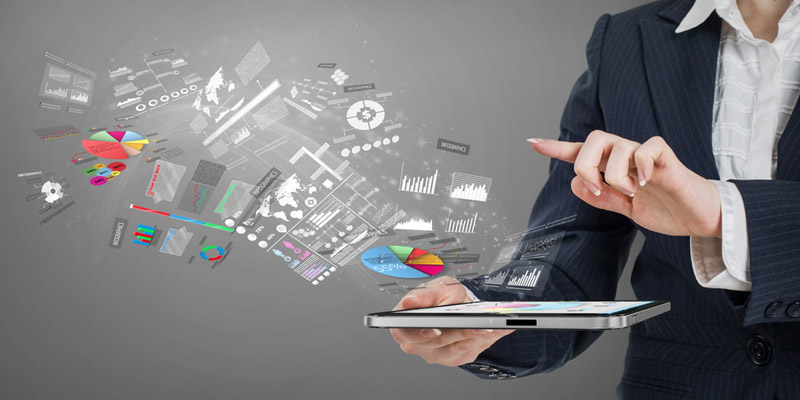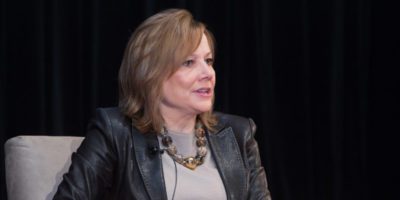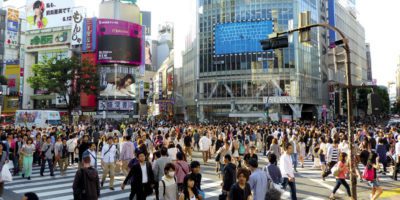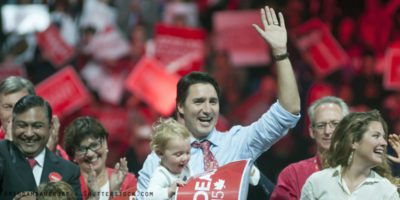Heather Savory joined the Office for National Statistics as Deputy National Statistician for Data Capability in April 2015. She has a strong commercial track-record and extensive board and senior management experience in entrepreneurial and high technology businesses, consulting and central government. Heather was appointed as Chair of the Open Data User Group (ODUG), an independent advisory group to the Government’s Public Sector Transparency Board, for three years from May 2012, and she is a former member of the Regulatory Board of the Royal Institute of Chartered Surveyors (RICS).
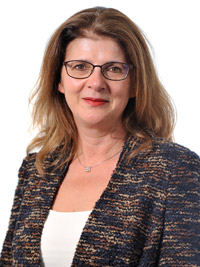
“…here at the ONS our workforce is over 50% female. There are many reasons that it makes sense for girls and women of all ages to get into this area…”
Heather, we love the variety in your career experience. Please can you tell us about your career to date and what got you interested in data and statistics?
My first degree was in Electronic and Electrical Engineering. By fate, chance, or whatever it was, after working in the defence industry I ended working in custom silicon chip design, designing 3D graphics systems. I’ve been dealing with data throughout my career.
I was a hardware designer. 3D graphic applications were big data before big data was invented and are both bandwidth and compute intensive. At 3Dlabs we designed, state-of-the-art, world-beating consumer products – the forerunners of the 3D graphics we now take for granted in things like visualisation and gaming.
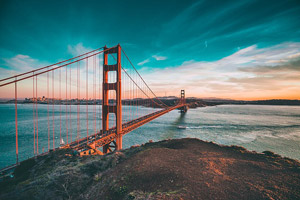
I had a very interesting time because, although headquartered in the UK, we worked mainly in Silicon Valley. When the company floated I decided that although I loved the US, I didn’t want to live there, so I came back to the UK and ran my own management consulting business. I also did my M.B.A. at London Business School (LBS).
Whilst at LBS I became very interested in how government works because Andrew Likierman, who was then Head of Government Accounting for Her Majesty’s Treasury (HMT), was my final year mentor. I also studied some new things like the non-financial performance management of organisations and social entrepreneurship.
I decided then that I wanted to do something with a little bit more meaning. I’d seen people make a lot of money and money very is useful, but I don’t think it necessarily makes you happy. I wanted to do something that would put something back into society, so that prompted me to go and work for central Government.
Initially I went to work at HMT to deliver the Gershon Efficiency Savings, working right across Government based on my experience in terms of organisational benchmarking. After that I went to work for the Better Regulation Executive on their initiative to reduce red tape on small businesses. Small businesses are a big passion of mine.
After BRE I stopped working full time and went plural [took on several different roles]. I used to sit on the Royal Institution of Chartered Surveyors Regulatory Board and I chaired their Scrutiny Panel. I was also appointed as an Independent Advisor to Ministers, as Chair of the Open Data User Group (ODUG), which I did for three years, sitting right at the interface between the Data User Community and Central Government and working to provide a bridge and to communicate the needs of data businesses and the wider data community, particularly small, innovative businesses – to the centre of Government. ODUG was reasonably successful in breaking down some of the barriers to the release of Open Data, where it is now expected that, wherever possible, the Government will make its data open.
As that was coming to an end I saw this job advertised here at the Office for National Statistics and I decided it was absolutely for me – it had my name written all over it – because it is everything that I believe in – transforming an organisation with some old and tired technology to make it fully digital. Also, the better use of data for economic and social benefit, helping the UK to make better decisions, both inside and outside Government. So I came back to full time work and here I am!
Please can you explain what your role at the ONS involves?
The ONS is the Office for National Statistics – it’s our national statistical institution and we also have responsibilities across the wider Government Statistical Service. The ONS has a lengthy history of hundreds of years, and measures the economy, looks at the structure of society and provides statistics that are very widely used for decision making, both inside and outside Government.

There is a move here at the ONS, under John Pullinger’s leadership, to make better use of the data that we hold, so we’re increasingly publishing visualisations and making our data available; doing more than just publishing a single number or a highly technical statistical report.
It is our job, and we are uniquely placed in this area, to collect data to enable us to measure the economy and measure society in order to see how our country functions. So we work very closely with the Bank of England, for example. Businesses make extensive use of our statistics too and we also do a lot of work with policy makers across Government. Statisticians are increasingly involved in providing the evidence which underpins decision making in Government, and that’s something that we want to see more of.
My role here is to come in and completely reshape the capability of the organisation – to make it a truly digital organisation, to move us away from historic methods of data collection like the paper surveys which we send out to businesses, the extensive telephone interviews that we do with lots of people to gather data – to become an online organisation wherever this is possible.
I’ve put in place two programmes of work so far: One is a digital transformation, and the other one is a workforce transformation. We are looking at moving to be ‘driven by data’ with everything that involves, which includes working to change our methodologies, and making sure that we have the right capabilities and skills here for the 21st century.
So there’s a lot going on here and it’s great fun!
How does the ONS support economists with the data it provides?
If you look at the statistics that are produced, they underpin the predictions about the economy – both the local economy and the global economy. So we have many economists working for us. Our economic statistics are one of the most important things that we deliver.
We have economists internally who have access to many different sorts of data. We’re expanding the types of data we’re encouraging them to look at so they can work out how the economy is functioning to make their predictions.
Our statistics are widely used and at a more academic level we also provide access for approved researchers in our secure research facility, so we allow people to come in and ask specific questions they need the answer to from the data that we hold for projects that are for the public good, rather than for commercial use.
How important are transparent, professional and robust methods to underpin the public’s trust in everything the ONS does?
Other than where we’re holding data which needs to be held securely because it contains information which cannot be made open (for example data which identifies individuals) we are as open and transparent as we can be in terms of how we undertake our work.

Equally, as an organisation, where possible, we are keen to be held to account for the work that we do. We have a very open and transparent ethos here – we’re not a closed shop that’s just publishing a single number. We’re publishing the data around it and we’re showing how we calculated it. We need to be open to external challenge to the work we do to be as professional as we can.
Would you be able to tell us more about ‘Open Data’ and the opportunities / challenges it presents?
The UK is part of the Open Government Partnership and the move towards more Open Data is born out of the transparency agenda. It’s about giving citizens the opportunity to hold the Government to account for the things that it’s doing with public money.
A good example of one of the achievements of the Open Data agenda over the past couple of years is that all Government departments are now required to publish their spending data openly. Anybody can go and interrogate the data and find out how much the Government is spending on stationery, for example. To see where our tax is going; that’s the citizen angle on it.
One of the more exciting areas for me – and that’s what I got involved in the Open Data agenda initially – is that there is data that the Government collects because it needs it for the day to day running of the country; or administrative data. If you make that data open, one of the thing that happens is that there are many people who can take that data and do other interesting and useful things with it.
For example, the travel apps that we now have on our smartphones to tell you when your bus is arriving or when the next train is coming – are possible because TfL [Transport for London] opened up its data; the Department for Transport has also been one of the pioneers in the Open Data arena.
Another topical example is Flood Data; over the last three years the Environment Agency has transformed itself into an Open Data organisation. Open Data allows the public, scientists and academics to make more predictions and to make use of government data in many different ways.
One of the reasons this is important is because although we have an increasing capability within Government to do better data analysis for policy making and for other reasons, like measuring policy impacts better, too, in my view you could never have too many people using this data. Data is full of information and you can look at it from many different angles, and get many different insights from the same dataset. That’s one of the reasons, where possible, to make data open. Data is a driver for innovation, for small companies in particular, which will help stimulate economic growth.
Data is a raw material. It has been likened to the oil of the 21st century. One of the key things now is that we need to start looking at our data as an infrastructure. Nowadays most people have access to quite considerable computing power, so a regular person with a laptop can access data over the Internet and get some useful insight from it.
Diversity is an interesting area. Increasingly people are looking for data to describe how diverse our society is at the moment, whether than be ethnic diversity or religious diversity or the LGBT agenda, so that’s a good example of where there are many groups with particular interests who are producing numbers about the levels of diversity, and questioning whether we have a truly egalitarian society, where there are the same opportunities for everybody.

You have extensive experience of working in the public sector. How can technology be best used to drive innovation?
It’s true that Government hasn’t always been the most innovative of places but I think that is changing. First of all there are serious pressures to do things more cost effectively and to deliver services digitally. We’re working very closely with the Government Digital Service (GDS) and the services that we will be building at ONS – for example online surveys will feed into other platforms which are being built across Government.
Government is now, finally, starting to use technology better, including cutting the costs of Government IT. So there are platforms being developed which can be put together like building blocks, which will allow public sector bodies to develop their own services on a modular basis, without each one having to design their own components independently.
As an example of what we’re doing with data, we have an innovation lab at the ONS and we’re looking very hard at data science and how best to use new sources of data, here and across the Government Statistical Service (GSS). So we’ve done some work on web-scraping to get better and more real time information on what grocery prices are doing, for example.
Technology itself underpins ways to work. It allows you to play around with and investigate new ideas, but more than that it allows collaboration and collective working in ways which just weren’t possible ten years ago. So it’s not just about analysis, digital design and visualisation. It’s not all about providing on-line services either. It’s about how you can get a disparate group of people together, which is often done virtually, to share ideas and to work out how to innovate, because very few innovations are arrived at by one person on their own.
The amount of data available to us all will grow and grow. We’re seeing that not just in the public sector, but across society as a whole. The challenges these days are not so much about its storage and its manipulation, in the way that it used to be, because we have significant computing power now, which continues to grow and we have flexible platforms which can be set up very easily.
The challenge is about how you gain insight from that data because there’s so much and because you need to think in a different way. You no longer think: “I’ve got to answer this question – I need to know A, B and C.” What you need to think is: “I’d like to know more about this subject – what can I mine from these data sources and put together to tell me more in a holistic way?”
What is your advice for women looking to get into data and statistics?
First of all I’d say, unlike many sectors, here at the ONS our workforce is over 50% female. Because of the platforms we have set up here (and elsewhere in Government) to work flexibly, there are many reasons that it makes sense for girls and women of all ages to get into this area. Data science has also been described as ‘the sexiest career of the 21st century’!
Look around you – you see data everywhere. There are many opportunities, not just for something which is intellectually challenging, but also for creativity with data. This is an area where women can also be creative – we can think differently; we tend work collaboratively as well, so I think there are many, many interesting opportunities available, and ones which can be flexible for modern ways of working, where people don’t necessarily have a single job or where people work in groups and move around and take on different challenges.

There are endless interesting opportunities to innovate and be creative. The industry itself is very flexible and very open to all types of people.
There’s the calculation of the result, which can be anything from Ph.D. maths down to some very simple metrics – just basic arithmetic, and more and more importantly, it’s about how you communicate those results to people so that other people can understand what it is that you’ve discovered. There is definitely a very creative side to the data industry.
What is coming up next for you and the ONS?
We’re very excited about the digital transformation that we have under way. You’ll see some very interesting things coming from that as we start to deliver.
We’re also enjoying our work on big data, and we’re proud to be part of the wider Government Data Programme, working with statisticians across all departments, working with every type of data imaginable – both big and small – this is a very exciting place to be at the moment at the heart of the data and statistics revolution.
http://www.ons.gov.uk/ons/index.html
https://www.linkedin.com/company/office-for-national-statistics

